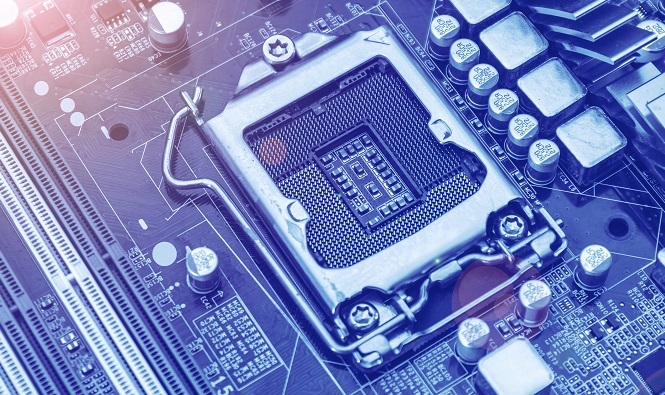
 Data Structure
Data Structure Networking
Networking RDBMS
RDBMS Operating System
Operating System Java
Java MS Excel
MS Excel iOS
iOS HTML
HTML CSS
CSS Android
Android Python
Python C Programming
C Programming C++
C++ C#
C# MongoDB
MongoDB MySQL
MySQL Javascript
Javascript PHP
PHP
- Selected Reading
- UPSC IAS Exams Notes
- Developer's Best Practices
- Questions and Answers
- Effective Resume Writing
- HR Interview Questions
- Computer Glossary
- Who is Who
What is the full form of DP?
Introduction
Data Processing (DP) refers to technique where the system converts the raw files into usable format for future purpose.

The process involves conversion of data into machine-readable form, for running in the CPU and then converted into the readable form on the output device.
The use of social media, shopping apps, internet banking and other platforms creates a huge amount of data. To utilise this information the term data processing has come into existence.
Meaning of DP
DP stands for "Data processing". Data is raw information which is of no use, this raw data is processed by a computer to fetch information. This fetching of information from raw data is known as "Data Processing". This process is completed by several steps, by a data scientist. This information is useful for various industries and businesses. The data processing depends upon;
The volume of data processed.
The complexity of the data,
Time
Technical knowledge
The capacity of the system.
Steps of Data Processing:
There are six steps in data processing. These are as follows;
Data Collection In this step, the data is collected from different sources like data lakes, data warehouses, etc. It is important to keep in mind that data is authentic and taken from a trusted source.
Data Preparation Data preparation refers to pre-data processing. In this process, data is checked so that it will be error-free, and free from invalid data.
Data Input In this step, data is not input into the system and translated into readable form.
Processing Now data is processed in the computer using algorithms, and converted into a usable form.
Data Output In this stage, the processed data is converted into human-readable form.
Data Storage In the final step the data is stored in the system for future use. When required data is fetched from the stored data.
Usage of DP
Data processing is used for commercial purposes by industries. Industries use data processing to get a large volume of data to get information.
For example, banking and insurance companies need a huge amount of data to maintain their record.
Data processing helps in creating better business policies and increasing competitiveness.
Through data processing, raw data is converted into more informative formats like graphs, charts and document form, so that it becomes more understandable.
Types of DP
There are different types of data processing based on the source of data. These are as follows;
Batch Processing In this type, the data is processed in batches. It is useful for processing a large amount of data. Example: Payroll System.
Online Processing In this processing, the data is automatically fetched and processed in the computer as soon as it is available. Example: Barcode Scanning.
Real-time Processing In this type, the data is processed within seconds as soon as the input is given. It is used for small data processing. Example: Cash withdrawal from a bank ATM.
Time-Sharing In this data processing the data is given in time slots to multiple users
Multiprocessing In this type, the data is processed by breaking it into frames and then processed. It is also known as parallel processing. Example The weather forecast.
Importance of DP
Data processing is quite important nowadays. It is used for various purposes fetching data, research purposes, etc. In the future cloud computing will help in the processing of data more efficiently.
Through data processing data fetched is quite efficient and authentic.
It is time-saving. It efficiently searches the data of any patient within seconds.
In the banking and insurance sector, it verifies customer detail and other information easily.
Through data processing, the transaction and other details are updated on customers' accounts easily.
It also helps the logistics department in fetching the details of customers and products.
It reduces the chances of errors in data.
Conclusion
Data is a valuable asset for any company nowadays. In data processing, raw data is processed by the computer to fetch information. It includes the raw data from different sources and converts it into machine readable form then processed by the computer to get output. These data are essential for various industries and companies to get useful information.
FAQs
Q1. Give some examples of Data processing.
Ans: We process data in our daily life in multiple works. Some examples are Barcode saccing for fetching data while shopping, and Stock trading software that uses data from multiple stocks and creates graphs for them. Another example is e-commerce websites that use customers' history of their buying for marketing purposes.
Q2. How many methods of data processing are there?
Ans: There are three methods of data processing.
Manual Data processing
Electronic Data processing
Mechanical Data Processing
Q3. Steps used for data processing used in research areas?
Ans: For research purpose data processing involves the following steps;
First Questionnaire is checked.
Then edit raw data whether it is correct or not.
Coding
Classification of data
Tabulation of data
Graphical representation of data.
Data cleaning
Data adjustment for adding additional information.

